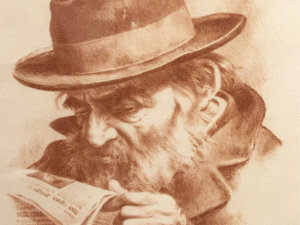All is not well in Madison, Wisconsin, where a hero of a man, Governor Scott Walker, is standing up to antagonistic crowds objecting to new policies he is trying to implement. Facing an overwhelming budget deficit, the good people of Wisconsin elected the governor who campaigned on a platform of fiscal sanity and belt-tightening. To help overcome the state of bankruptcy, Walker wants to pass a bill to get teachers and other public employees to pay their fair share of health coverage and retirement benefits. It would also place restrictions on their collective bargaining rights that have emptied the state’s coffers of much needed taxpayer money.
The governor is merely listening to the voices of the majority who voted him into office. This, of course, does not sit well with the bogeyman in this story, the union bosses, who adamantly refuse to relinquish any of their power. The cowardly state senators, puppets of the unions who are smelling sure defeat, have fled into hiding to avoid a vote.
In typical Obama fashion, the president is once again on the wrong side of the issue. At least he’s consistent. Instead of busying himself with cutting the nation’s astronomical deficit, now in the trillions, he is taking up the cause of the protesters. Can you blame him? He is only protecting his political hide, knowing full well that his tenure in office depends on union support. Union bosses, worried about their own hides, are shipping in hired protesters to fight for their cause. Battlegrounds are also being set in Ohio and Indiana, which face the same problems. Others are sure to follow.
But wait. How can one demonize the unions, when they have done so much good for employees everywhere? My own parents, sheyichyu, and many thousands of other hardworking, erliche Yidden have gained immeasurably from the advantages that union members enjoy. They benefit from health coverage and pensions that non-union workers can only dream of. Aren’t unions, then, a good thing? They certainly started out that way.
The growth of industry and big business was problematic for workers. To maximize profits and minimize costs, wages were generally kept as low as possible. Sixty-to seventy-hour workweeks were not unusual. Working conditions were uncomfortable and even hazardous. Factories were generally cold during the winter, hot during the summer, and lacking proper ventilation. If an accident occurred, killing or injuring a worker, the employer never accepted responsibility. Individual employees were helpless in the workplace. So, as a response to the greed of their bosses, the workers organized large labor unions.
Here is an excerpt of a young woman’s account of what it was like to work in a garment factory in Brooklyn in the year 1900:
“In the Brownsville factory where I work, we produce cheap shirts. I earn $4.50 a week; at 7 a.m., we begin to work at our machines that run like mad the entire day. The faster we work, the more we produce and the more money we get. Sometimes, in haste, my finger gets caught in the sewing machine and the needle goes right through it. It goes so quick though that it doesn’t hurt much. I bandage it up. When the needle goes through the nail, it leaves a sore finger, but if it splinters the bone it causes much harm. So we must work in haste, but carefully.”
In some places, workers were literally locked into poorly lit firetraps, working 12-14 hours a day. In 1911, one of the worst fires in U.S. history occurred at the Triangle Shirtwaist Company on the Lower East Side of Manhattan, killing 146 women. This motivated many Jews, naturally attuned to social justice, to take the lead as a force opposing these abominable conditions. Indeed, this was a most noble cause. What, then, went wrong?
Perhaps it was best summed up in just one word by the famous labor leader Samuel Gompers, a Jewish immigrant from England who headed the American Federation of Laborers, today the largest union in America. When asked what he wanted for members of his union, he replied simply, “More.” At the time, this referred to plain bread and butter goals: higher wages, shorter working hours, and better working conditions.
But over the years, the “more” expanded to a point where, today, the workers’ rights are excessive. Because of this, prices of U.S. products have sky rocketed to the extent that we cannot compete with foreign companies that aren’t bound by these restrictions. This has led to the American auto industry going down the tank. The powerful teachers union has caused the price of education to skyrocket as the quality of learning in American public schools has consistently plummeted. And, as mentioned before, these ambitions have brought the public treasuries to bankruptcy. What started out as “more” has now become less because of what they have done to our economy. It doesn’t bode well for workers, as companies are forced to fire workers. With coffers laden to the hilt by union members’ dues, politicians are bought off, so they can’t speak out against this lunacy.
This is the nature of man. He may start an organization with the most altruistic motives and work hard at achieving his goals, but as he progresses, he loses sight of what his original intentions were, and then he strays in different directions. What was once a noble cause can turn out to be counterproductive.
– – – – –
There is a general rule in the Torah: a frugality on words. Sometimes, halachos are derived from one extra letter. Rabi Akiva derived halachos from the crowns on the letters. Yet, in the last few weeks, we have seen an abundance of words uncharacteristic of the Torah. Two entire sedros, Vayakel and Pekudei, seem to be excessive, for they are basically a repetition of Terumah and Tetzaveh, which speak of the building of the Mishkan, its vessels and the vestments of the kohanim. There are numerous explanations for this generosity of the written word. One of them is a powerful lesson regarding our serving Hashem. These sedros teach us about three stages in our avodah.
The first component in the building of the Mishkan was the planning stage. It started with a dream – the aspiration of erecting a dwelling place for the holy Shechinah. “Zeh Keili ve’anveihu – This is my G-d and I will build him a Sanctuary” (Shemos 15:2). It continued with the details of the plan in the parshiyos of Terumah and Tetzaveh, which map the blueprint of this edifice. Similarly, our ascension in our relationship with Hashem begins with a desire to come close to Him. But it cannot stop there. It must be followed with a plan, for if one doesn’t have a clear-cut design of the path, he may end up straying in all directions. And without delineated goals to strive for, life can be meaningless.
The second stage of the Mishkan was to implement the plan to actualize the blueprint. This deserves totally new parshiyos, Vayakel and Pekudei. Because many are the dreamers and planners of great projects in the abstract. But to bring those thoughts to fruition is a totally new endeavor. It involves toil, sweat and perseverance in overcoming the pitfalls that one may face in attaining his goal. Laziness is not acceptable, as the nesi’im found out when they delayed in bringing their donation and were chastised for it.
One must be sincere enough in his quest not to allow ego to get in the way. When Moshe Rabbeinu, after much effort, realized that he was unable to form the Menorah, he didn’t hesitate to swallow his pride and hand over the job to his talmid, Betzalel. Similarly, Moshe was able to admit a mistake. When Betzalel corrected him, saying that first the edifice must be built and then the vessels, Moshe told him, “Betzalel…Betzeil Keil hayisah – You must have been in Hashem’s shadow when he spoke to me, for you heard the words of Hashem accurately” (Rashi 38:22). The fact that Betzalel was a mere thirteen-year-old boy did not stop Moshe from admitting that he, the rebbi, had erred and that Betzalel was correct.
Finally, after one has finished his project and attained his goal, he must do some introspection and see if everything went according to plan. This we learn in Parshas Bechukosai, where Moshe gave a reckoning of all of the donations and what they were used for. One mustn’t fool himself into thinking that he has reached his destination. He must rather probe and second-guess himself until he is truly convinced that he accomplished what he set out to do.
The Satmar Rebbe, Rav Yoel Teitelbaum zt”l, once organized a mass rally in an auditorium near the Israeli Consulate, protesting some wrongdoing by the State of Israel. Shortly before the rally began, one of the Rebbe’s close confidants noticed him pacing back and forth nervously. When he asked the Rebbe about his look of apprehension, the Rebbe answered, “I am worried that I am not doing the right thing by leading this demonstration.”
“What?!” said the chossid. “The Rebbe is in doubt as to whether the cause we are fighting for is a just one?”
“No,” said the Rebbe. “But I am afraid that maybe I am not acting totally lesheim Shomayim. Perhaps I am doing this for the sake of the feeling of victory.”
This is how tzaddikim accomplish their lofty goals – by planning, acting, and then ascertaining that they have indeed accomplished what they set out to do.
In fact, this is what the Ribono Shel Olam did when He created the world. The blueprint for the universe, the Torah, was charted out 974 generations before creation (Shabbos 88b). Then he implemented the plans, actualizing them with the Asarah Maamaros. “And Hashem said, ‘Let there be light and there was light, etc.’” But after every creation, it says, “And Hashem saw that it was good.” This is the probing to see if the objective was met.
The Mishkan was a miniature of the entire universe and its nerve center. It is no wonder, then, that they were both erected in similar stages, Man, too, is a microcosm of the entire briah and, according to the Kuzari, the parts of his anatomy correlate with different vessels of the Mishkan. It stands to reason that his spiritual growth must follow the same path as the creation of the world and the building of the Mishkan.
But it doesn’t end there. In fact, this is just the beginning. Now we approach Parshas Vayikrah, which teaches us about the korbanos. Within the framework of this glorified edifice, we are asked to make sacrifices for the sake of Hashem. Even after all of the accomplishments in building the Mishkan, we cannot stop and rest on our laurels. We must move on in conquering greater heights. Unlike the goals of the unions, where “more” means attaining extras for oneself and selfishness can easily cause one to stray from his original path, here “more” means to sacrifice of ourselves, to advance on that very same road that we paved for ourselves to begin with.
How beautiful and relevant are the words of the poem:
Bilvavi Mishkan evneh lehadar Kevodo
In my heart I shall build a Tabernacle to the splendor of His glory
UleMishkan mizbeiach asim lekarnei Hodo
And in the Tabernacle I shall place an alter to the radiance of His power
Uleneir tamid ekach lee es eish ha’Akeidah
And as the eternal light I shall take for myself the fire of the Binding (of Yitzchok as a korbon)
Ulekorban akriv lo es nafshi hayechidah
And as a sacrifice I shall bring forth to Him my only soul







